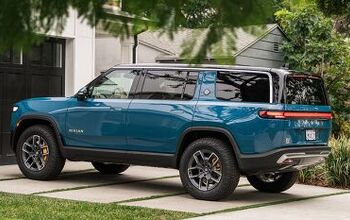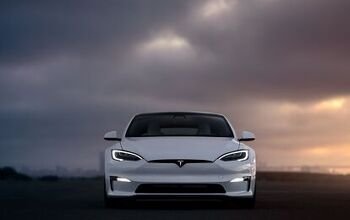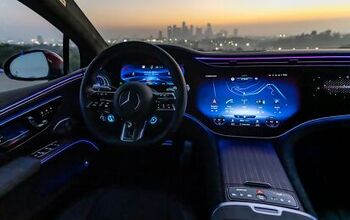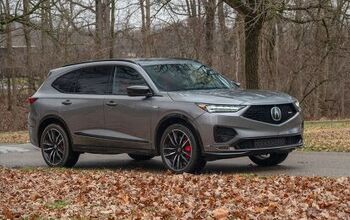Israel Preps World's First Hybrid Car Radiation Scale
Hybrid cars may be green, but are they dangerous? According to Israel’s of Environmental Protection, this may be the case. A research committee funded by the ministry studied radiation from hybrid vehicles over the course of the last nine months, found ‘surplus’ radiation in some models sold in Israel and worldwide, reports Israel’s The Marker.
Not exactly flower power, the radiation in question is cast by the electromagnetic field made by alternating current (AC) flowing from the batteries in the back to the engine up front. The medical implications of this non ionizing radiation, similar to radiation from cellphone antennas, are not yet clear.
The Australian Radiation Protection and Nuclear Safety Agency (ARPANSA) recommends a limit of 1,000 mG (milligauss) for a 24 hour exposure period. While other guidelines pose similar limits, the International Agency for Research on Cancer (IARC) deemed extended exposure to electromagnetic fields stronger than 2 mG to be a “possible cause” for cancer. Israel’s Ministry of Health recommends a maximum of 4 mG.
The ministry’s foray into this topic is a culmination of a public outcry resulting from publications in the media regarding possible dangers from radiation in hybrid cars. Last year, Israeli automotive website Walla! Cars conducted a series of tests on the previous generation Toyota Prius, Honda Insight and Honda Civic Hybrid, and recorded radiation figures of up to 100 mG during acceleration. Measurements also peaked when the batteries were either full (and in use) or empty (and being charged from the engine), while normal driving at constant speeds yielded 14 to 30 mG on the Prius, depending on the area of the cabin.
The Ministry of Environmental Protection is expected to publish the results of the study this week. The study will group hybrids sold in Israel into three different radiation groups, reports Israel’s Calcalist. It’s expected that the current-gen Prius will be deemed ‘safe’, while the Honda Insight and Civic Hybrid (as well as the prev-gen Prius) will be listed as emitting ‘excessive’ radiation.
If published, the radiation scale will be the first of its kind in the world, even as hybrid cars top the sale charts in Japan. Local Toyota and Honda dealers, of course, are not exactly gleaming with joy, and already hired the services of two lobbying companies to try and call off the publication of the new scale. The two companies, in a surprising display of unison, claim that many electronic devices and gasoline powered cars emit similar and even higher levels of radiation, and deem the study unfair due to the lack of participation of conventional cars.
Recently, the research committee stirred the public conscious as it advised the Israeli Police against adding hybrid cars to its mostly diesel powered fleet, due to medical hazards to officers exposed to radiation for lengthy periods of time.
More by Tal Bronfer
Latest Car Reviews
Read moreLatest Product Reviews
Read moreRecent Comments
- Cprescott Not legal. Executive branch cannot fund jack. This is Congressional authority.
- FreedMike I'm sure it's a nice enough car, but dear Lord, are these ugly, and it's a lot worse in light colors.
- Fred If the guy behind me had auto braking maybe he wouldn't have rear ended me and totaled my car. Even with insurance it would of saved me $10g and I'd still have my safe driving discount.
- SCE to AUX I don't really understand what this money does, but if it's for The Children, then I'm all for it.
- Redapple2 Super looking. 4000lbs and $75,000 out the door and i d be tempted.


































Comments
Join the conversation
The more things change, the more they remain the same. James Thurber, about eighty years ago (or so), in one of his reminiscences of his youth, wrote about his grandmother, who was worried that electricity would leak out of the new-fangled wall outlets when they didn't have anything plugged into them. I'm laughing today too.
Before you start worrying about magnetic fields from your hybrid, you'd better throw out all your household appliances. The magnetic fields (the specific kind of radiation you're talking about here) from household appliances like ovens, microwaves and vacuum cleaners (most anything with a motor) runs 10 to 500 mGauss - as larger or larger than the hybrid fields, but still below the 1000 mGauss health limits set by the EU, WHO, etc. for these kinds of higher frequency intermittent magnetic fields (see this EU report for an example: http://ec.europa.eu/health/ph_determinants/environment/EMF/brochure_en.pdf ). The limits you cite from the IARC relate to constant long term constant exposure to low frequency magnetic fields in residential environments (e.g living under power lines). You can read about that very different situation here ( http://www.iop.org/EJ/abstract/0952-4746/21/3/604 ). By using the IARC limits for hybrids (or your blender), you (and the Israeli Environment Ministry) are making a classic apples to oranges comparison mistake. If the IARC limits applied to all the electrical stuff we use on a daily basis, we'd all be braindead by now.